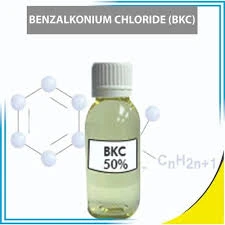Versatile Applications of Amphoteric Polyacrylamide in Water Treatment and Industry
Amphoteric Polyacrylamide A Versatile Polymer for Diverse Applications
Amphoteric polyacrylamide (APAM) is a type of polymer that has gained significant attention in various fields due to its unique properties and versatility. As a result of its bifunctional nature, APAM exhibits both cationic and anionic characteristics, allowing it to interact with a wide range of substances. This article explores the synthesis, properties, and applications of amphoteric polyacrylamide, highlighting its importance in modern technologies.
Synthesis of Amphoteric Polyacrylamide
APAM is typically synthesized through the radical polymerization of acrylamide in the presence of both cationic and anionic monomers. The incorporation of these monomers results in a polymer chain with charged functional groups that can either donate or accept protons depending on the pH of the surrounding environment. This amphoteric nature is what distinguishes APAM from other types of polyacrylamides, such as cationic or anionic polyacrylamide, which only carry a single type of charge.
The synthesis process allows for the tuning of the properties of APAM by adjusting the ratio of cationic to anionic monomers. This enables researchers and industrial developers to create tailored polymers that meet specific performance requirements. The molecular weight of the polymer can also be controlled during the synthesis, giving rise to differences in viscosity and solubility, which are important factors in determining the application of the polymer.
Properties of Amphoteric Polyacrylamide
The unique properties of APAM stem from its amphoteric nature. One of the most notable features is its ability to flocculate or coagulate particles in aqueous solutions. This property is particularly desirable in water treatment processes, where APAM can effectively bring together suspended solids, promoting their removal from the water. The flocculation performance of APAM is influenced by pH, ionic strength, and the concentration of the polymer itself.
In addition to flocculation, APAM exhibits excellent water retention capabilities, which makes it a valuable additive in agriculture. It can help retain moisture in soil, reducing the need for frequent irrigation and improving the overall health of crops. This attribute is increasingly important in the context of climate change, where water scarcity and drought conditions are becoming more prevalent.
amphoteric polyacrylamide

Another critical property of APAM is its biocompatibility. This characteristic renders it suitable for use in biomedical applications, such as drug delivery systems and tissue engineering. The ability to functionalize the polymer with various bioactive molecules allows for the development of smart materials that can respond to specific stimuli, enhancing their efficacy in medical applications.
Applications of Amphoteric Polyacrylamide
The versatility of amphoteric polyacrylamide has led to its widespread use across various industries. In the wastewater treatment sector, APAM serves as a coagulant and flocculant, facilitating the removal of pollutants from water. Its ability to adjust to different pH levels makes it an effective solution for a variety of wastewater compositions.
In the mining industry, APAM is employed in mineral processing to help separate valuable minerals from waste materials. Its flocculating properties enhance the recovery of minerals, making the overall process more efficient and cost-effective.
The agricultural sector has also embraced APAM for use in soil conditioning and water retention. As an additive in fertilizers and soil amendments, APAM improves the moisture-holding capacity of soils, promoting healthier plant growth and increased yield.
In the biomedical field, APAM's biocompatibility opens up numerous possibilities for drug delivery systems and tissue engineering scaffolds. Its ability to release drugs in a controlled manner allows for targeted therapies that can improve patient outcomes.
Conclusion
Amphoteric polyacrylamide is a remarkable polymer that possesses a unique set of properties attributable to its amphoteric nature. Through careful synthesis and modification, APAM can be tailored to meet the demands of various industries, from water treatment and agriculture to mining and biomedicine. As research continues to explore its potential, amphoteric polyacrylamide will undoubtedly play an increasingly important role in addressing some of the challenges faced in these fields today. Its versatility and effectiveness make it an invaluable resource in the quest for sustainable solutions and advanced materials.
-
Water Treatment with Flocculant Water TreatmentNewsJun.12,2025
-
Polymaleic AnhydrideNewsJun.12,2025
-
Polyaspartic AcidNewsJun.12,2025
-
Enhance Industrial Processes with IsothiazolinonesNewsJun.12,2025
-
Enhance Industrial Processes with PBTCA SolutionsNewsJun.12,2025
-
Dodecyldimethylbenzylammonium Chloride SolutionsNewsJun.12,2025





